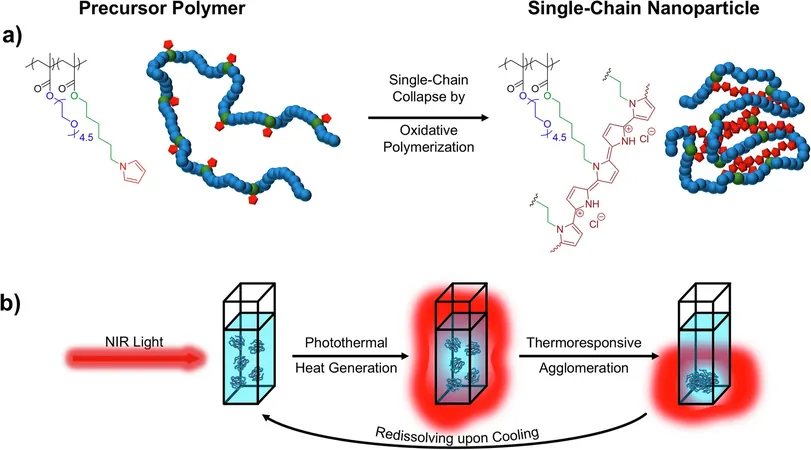
Revolutionary Light-Sensitive Nanoparticles: A Game Changer for Medical Imaging
2025-09-22
Author: Liam
Unlocking the Future of Medical Imaging
A groundbreaking innovation in medical imaging is on the horizon, thanks to the development of a new class of light-sensitive nanoparticles by researchers at Martin Luther University Halle-Wittenberg (MLU). These remarkable particles harness laser light, transforming it into heat and altering their internal structure, much like how proteins fold.
What Are Single-Chain Nanoparticles?
Dubbed single-chain nanoparticles (SCNPs), these cutting-edge particles are crafted from individually folded polymer chains and infused with polypyrrole. This special substance is capable of absorbing near-infrared light, converting it into heat. When these nanoparticles are irradiated with a laser, they not only heat up but also undergo a structural transformation.
The Science Behind the Transformation
When exposed to light, each SCNP clusters to form a tiny spherical structure just a few nanometers wide. Professor Wolfgang Binder, who led the study alongside Dr. Justus Friedrich Thümmler, Professor Karsten Mäder, and Professor Jan Laufer, emphasizes the potential of these nanoparticles: "This clumping could allow for precise targeting in specific body areas where light is used."
Thermoresponsivity: A Key Feature
One of the most astonishing features of SCNPs is their thermoresponsivity, meaning their structure adapts to temperature changes. This unique property is due to their specially designed molecular composition, enabling them to efficiently convert light into heat. In laboratory experiments, even a weak laser beam can cause a few nanoparticles to achieve extremely high local temperatures, reaching up to 85°C!
Implications for Medical Diagnostics
This thermal effect holds immense promise for medical diagnostics. The swift heating of tissues generates sound waves, which can be captured through photoacoustic imaging techniques. This innovative approach could pave the way for creating intricate 3D models of internal body structures. The research team envisions these particles playing a crucial role in cancer research, enhancing the visibility of tumors and their responses to various treatments within a few years.









 Brasil (PT)
Brasil (PT)
 Canada (EN)
Canada (EN)
 Chile (ES)
Chile (ES)
 Česko (CS)
Česko (CS)
 대한민국 (KO)
대한민국 (KO)
 España (ES)
España (ES)
 France (FR)
France (FR)
 Hong Kong (EN)
Hong Kong (EN)
 Italia (IT)
Italia (IT)
 日本 (JA)
日本 (JA)
 Magyarország (HU)
Magyarország (HU)
 Norge (NO)
Norge (NO)
 Polska (PL)
Polska (PL)
 Schweiz (DE)
Schweiz (DE)
 Singapore (EN)
Singapore (EN)
 Sverige (SV)
Sverige (SV)
 Suomi (FI)
Suomi (FI)
 Türkiye (TR)
Türkiye (TR)
 الإمارات العربية المتحدة (AR)
الإمارات العربية المتحدة (AR)